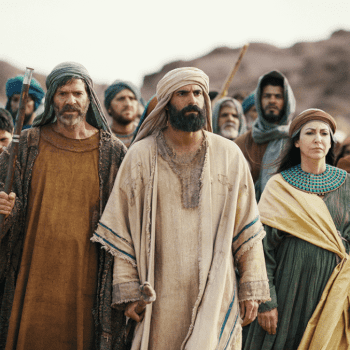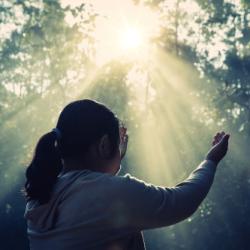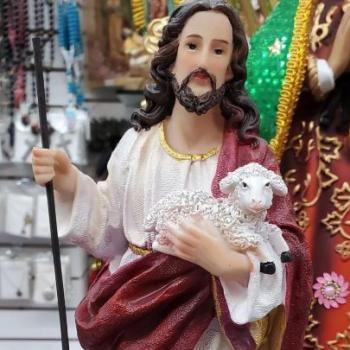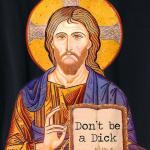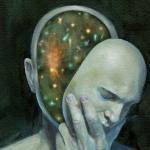In the midst of black holes, burning churches, and political corruption, how can Easter put us in the proximity of hope?
Have you noticed the eerie similarities between the events of Holy Week and the events of our own world in the past ten days?
As we watched the burning of Notre Dame Cathedral from an accidental electrical fire, I recalled Jesus’s words after he came into Jerusalem on Palm Sunday and gazed at the temple with his disciples. “‘You see all these, do you not? Truly I tell you, not one stone will be left here upon another; all will be thrown down’” (Matthew 24:2). I thought of those words as I watched that giant heavenward spire blazing red and orange from within, and then collapsing into the plumes of smoke.
Just a few days earlier, three other churches were burned – not on accident, but with malevolent intent, the result of racial hatred. The historically black churches in Louisiana were deliberately torched by a white supremacist hell-bent on burning those sacred buildings to the ground. I thought of Jesus praying in the Garden of Gethsemane as the mob came with torches in the night. I thought of burning crosses and white hoods coming to kill an innocent man, to hang him on what James Cone called “the lynching tree.”
And just this morning we woke up to the news of three churches along with hotels bombed in Sri Lanka, a country off the coast of India. Close to two hundred killed, hundreds wounded, sanctuaries destroyed on the high holy day of the church year, Easter Sunday. Add these barbaric acts of violence to the mosque shooting in New Zealand, the synagogue shooting in Pittsburgh, and it seems as if religion itself is under attack.
Our news cycle has also been dominated by the release of the Mueller Report that recounted stories of corruption, obstruction of justice, blatant and unrepentant lies, and the abuse of power. All of this was set against the backdrop of the stories of Holy Week where Jesus was sentenced to death by religious and political leaders who were also corrupt, who obstructed justice, told blatant and unrepentant lies, and abused their power.
But what has really grabbed hold of me this week was the story about a black hole. Scientists for the first time found a way to photograph a black hole in space. Black holes are the result of collapsed stars that result in this frightening abyss of nothingness where existence is simply snuffed out. Up until last week, they had previously been invisible. But now they’ve captured an image of that ring of fire around an eye of sheer darkness. It was both really cool, and really unsettling. I don’t know about you, but the thought of a gravitational pull so strong that not even light can escape it is both awe-inspiring and terrifying.
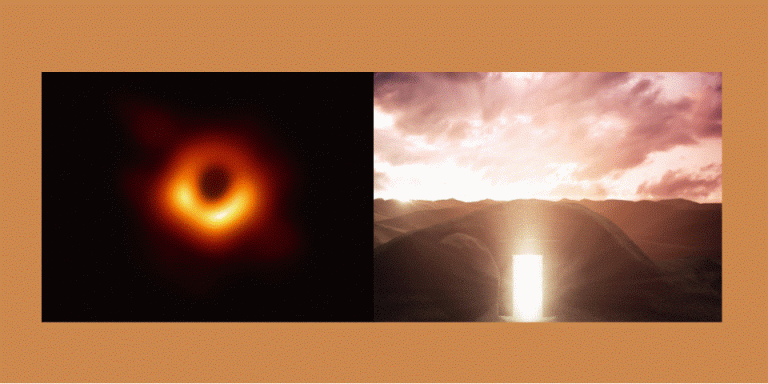
I wonder if that’s how the women felt coming to the tomb on Easter morning – a combination of awe and terror.
Standing before the dark entryway of that cave, they held the spices and fragrances to anoint Jesus’ body as an act of honor and love. But all they saw was a black hole where the stone had been rolled away. They must have been both awe-struck and terrified.
All week they had followed behind Jesus, watching his body being tortured, his dignity stripped away, and his entire being consumed by the hatred and evil of powerful men. Maybe standing at the cross was like watching those churches burn – you can’t stand to watch, but you also can’t stand to look away.
When I think about that 850-year-old church spire collapsing in flames;
When I think about black churches and communities of color engulfed in flames of racism;
When I think about immigrant children separated from their parents and caged like animals;
When I think about the tens of thousands of lives cut short at the end of a gun – including children in schools and their own homes, and worshipers in their sacred buildings;
When I think about every day that goes by when we lose another endangered species, another glacier, another coral reef, as the climate crisis marches us closer to an apocalyptic future;
All of this sometimes feels to me like we are right at the edge of a terrifying abyss where the gravitational pull of evil is so strong that not even light can escape it.
This is where we find ourselves this Easter morning – at the juxtaposition between these extremes of awe and terror.
We stand beside those women who have been devastated by loss and who dread what is in that black hole of a tomb. Like those women, we are in the presence of forces that are so much bigger than we are, forces that care nothing about truth, or goodness, or the respect for life. Forces that have the gravitational pull of a collapsed star and threaten us with a powerful cosmic violence.
It’s no wonder those women trembled. I have trembled, too. Maybe you also know what it feels like to tremble.
Even when they discover that the tomb is empty, when they learn that Christ is risen, the women still can’t stop trembling. It’s this moment of disorientation when they’re not quite sure where to go, or what to do, or what to say.
Each of the Gospels has a different perspective on this.
Matthew tells of the ground shaking and a dazzling angel appearing to the two Marys telling them that Jesus has been raised from the dead (Matt. 28:1-7).
In John, it’s just Mary weeping in utter despondency when she first encounters Jesus. And she doesn’t even recognize him at first, thinking him to be the gardener (John 20:11-15).
In Luke, the women were “terrified and bowed their faces to the ground” when they saw the two angels announcing Jesus’ resurrection (Luke 24:5). But when they try to tell the male disciples of this miracle, no one believes them. They consider it an “idle tale” (Luke 24:11).
In Mark’s original ending, the women don’t even say a word to anyone. “They went out and fled from the tomb, for terror and amazement had seized them; and they said nothing to anyone, for they were afraid.” (Mark 16:9).
I understand this fear. It disorients me. It rearranges my thoughts in ways that I can’t always control. It shakes up all the puzzle pieces in my brain, and I have to remember where all the pieces go. Sometimes this fear even takes some of the pieces away, leaving me frustrated, paralyzed, and feeling like I’m teetering at the edge of the abyss.
Perhaps I’m just overly sensitive, but I find myself in this grief-stricken state of disorientation more times than I care to admit.
One time it happened when I was talking with my friend and colleague Emily Askew who teaches theology at Lexington Theological Seminary. We were talking about Earth Day and how the celebrations of flowers and greenery seem insignificant when the truth is that people are being murdered in places like the Amazon and Central America for trying to protect the environment. I was feeling overwhelmed by the terrifying news about the state of our planet’s climate and the relentless stories about God’s precious creatures blinking out like stars sucked into the black hole of extinction.
As we were talking, I just began weeping with sadness and grief. I feel so powerless, I said. But I have children to raise, and a husband who is my beloved life partner, and students who count on me to teach them how to be pastors, and for heaven’s sake, I am a Christian preacher! How can I encourage people to believe the gospel when I myself am struggling in the face of this reality?
Emily was quiet at first and just sat with me in my grief. Then she said this:
“What I do when I feel this way is to put myself in the proximity of hope.”
She said, “If I can’t generate hope on my own, then I find something or someone who can pull me back into their orbit and keep me from falling into the abyss. You don’t always have to be the strong one. That’s what God’s grace is all about. Just put yourself in the proximity of hope.”
And so I have taken her advice. I pick up those burial spices and I follow the women who followed Jesus. I put myself in their proximity, the proximity of hope. And I find myself gently pulled into their orbit, and I watch where they point me.
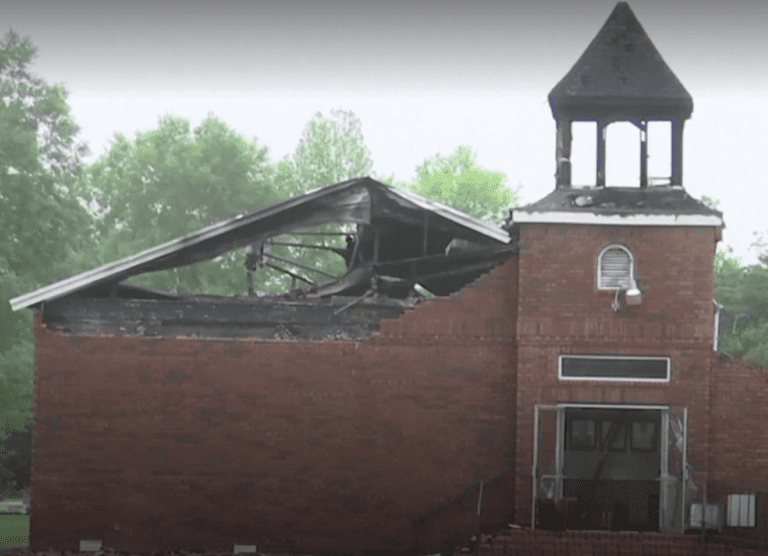
This week as the churches burned, I also I learned of a father and daughter who had reconciled after a long period of estrangement that was like a cold void between them and everyone else around them. The father shared with me that they had found a way to be in relationship with each other – something I was not sure possible when I had last talked to them. This reconciliation between a father and daughter is a small thing, perhaps. But it was a resurrection moment for me that I clung to in the midst of the earthquakes that shook our world this week.
I also read about wealthy donors who have pledged millions of dollars to rebuild Notre Dame. But the real story for me is that over $2 million has been raised through a GoFundMe account for the Louisiana churches. As one of the pastors said, “What had been intended for evil, God has transformed into good.” I choose to believe that these are words of resurrection and not counted as an idle tale.
And then I watched a video of Greta Thunberg, the teenage climate activist from Sweden, who urged those same billionaires to use their wealth to help find solutions for the climate crisis. I see Jesus, the Gardener of this planet, in her bold and fearless witness.
Putting yourself in the proximity of hope means that when, like those women in Mark’s Gospel, you find yourself frozen in fear or paralyzed by depression, you can remember that it’s not always up to you to solve everything, to fix everything.
Retired homiletics professor John Holbert said it this way:
What Easter asks of all of us is to exchange our story of death and anger and hatred and division, our tale of rejected immigrants, ostracized LGBTQIA siblings, vast disparities between rich and poor, denial of basic rights to those different from us, denial of the obviously eroding planet – exchange that for the story of the resurrection of Jesus, that tale that announces that death is not the final word, that life can be hopeful and rich and fulfilling, that love triumphs in the end. (“The Peripatetic Preacher: Easter for Progressive Preachers,” John C. Holbert, Patheos. April 9, 2019.)
So I put myself in the proximity of hope that this God, this Jesus, is sovereign even over the crushing nothingness of black holes.
I put myself in the proximity of hope that God is sovereign over the forces of evil that gaslight us, and lie to us, and cage our children, and stoke fires of hatred, and pit us against each other, and make us afraid.
I put myself in the proximity of hope that Jesus is sovereign over the forces of fear and anger that want to arm themselves in order to shoot and kill, bomb, burn, and destroy.
The Easter story tells me the gravitational pull of the man on the outside of that tomb is stronger than the pull of the black hole within that tomb.
So I put myself in the proximity of hope that this same Jesus will give me, and you, and all of us, just enough courage to stand at the edge of the abyss and shout
or sing
or just whisper these words:
Christ is risen! He is risen indeed! Alleluia!
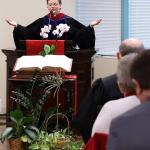
Leah D. Schade is the Assistant Professor of Preaching and Worship at Lexington Theological Seminary in Kentucky and author of the book Creation-Crisis Preaching: Ecology, Theology, and the Pulpit (Chalice Press, 2015).
Twitter: @LeahSchade
Facebook: https://www.facebook.com/LeahDSchade/
Read also:
Holy Humor Sunday: Ideas for Celebrating the ‘Easter Laugh’







